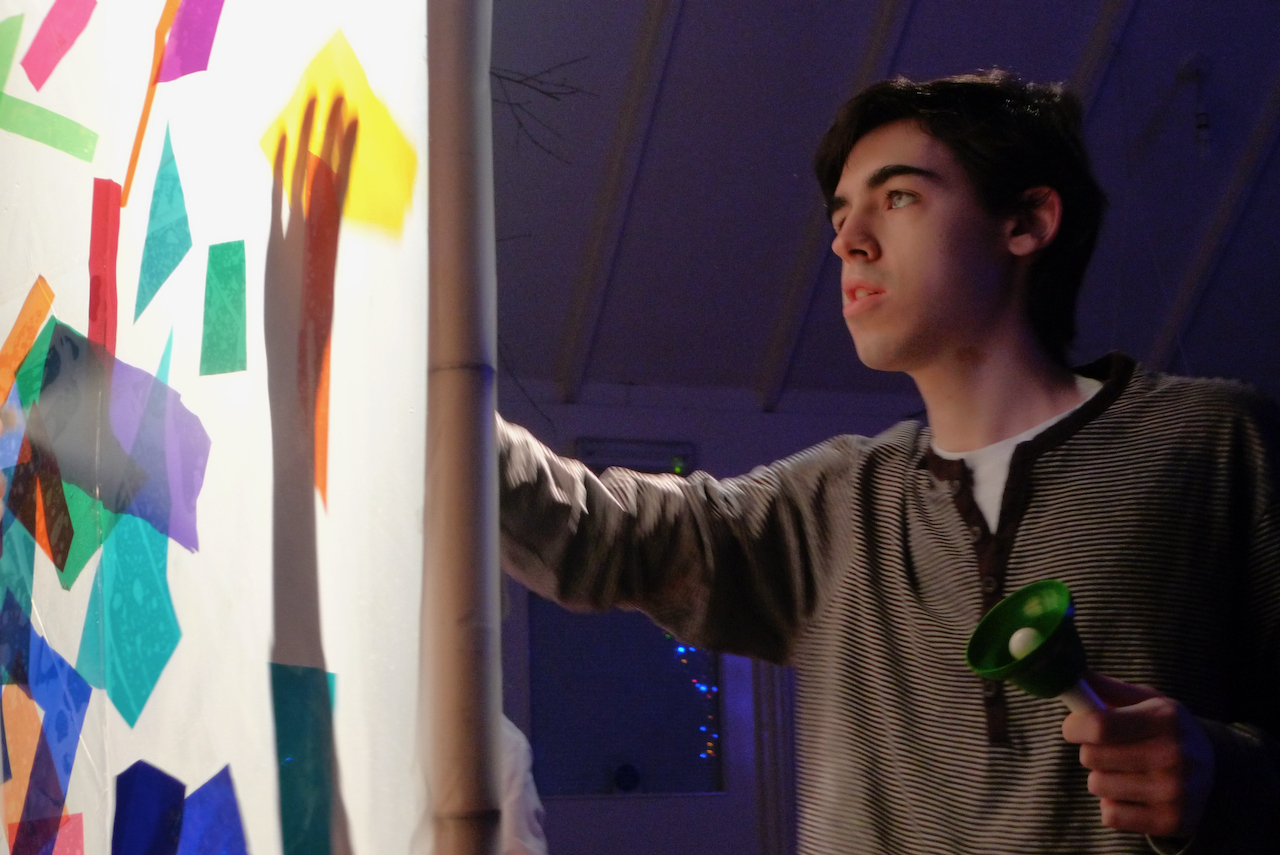Visual Art
Art can take many forms within multisensory
workshops. It can be exactly what one expects i.e. drawing/painting etc, though
it is always presented within a clear context with as wide a variety of
materials as possible, using mediums that provide visual, tactile and even
aural qualities themselves.
Never impose your expectations onto a
participant, they will be creative in their own way and probably surprise you.
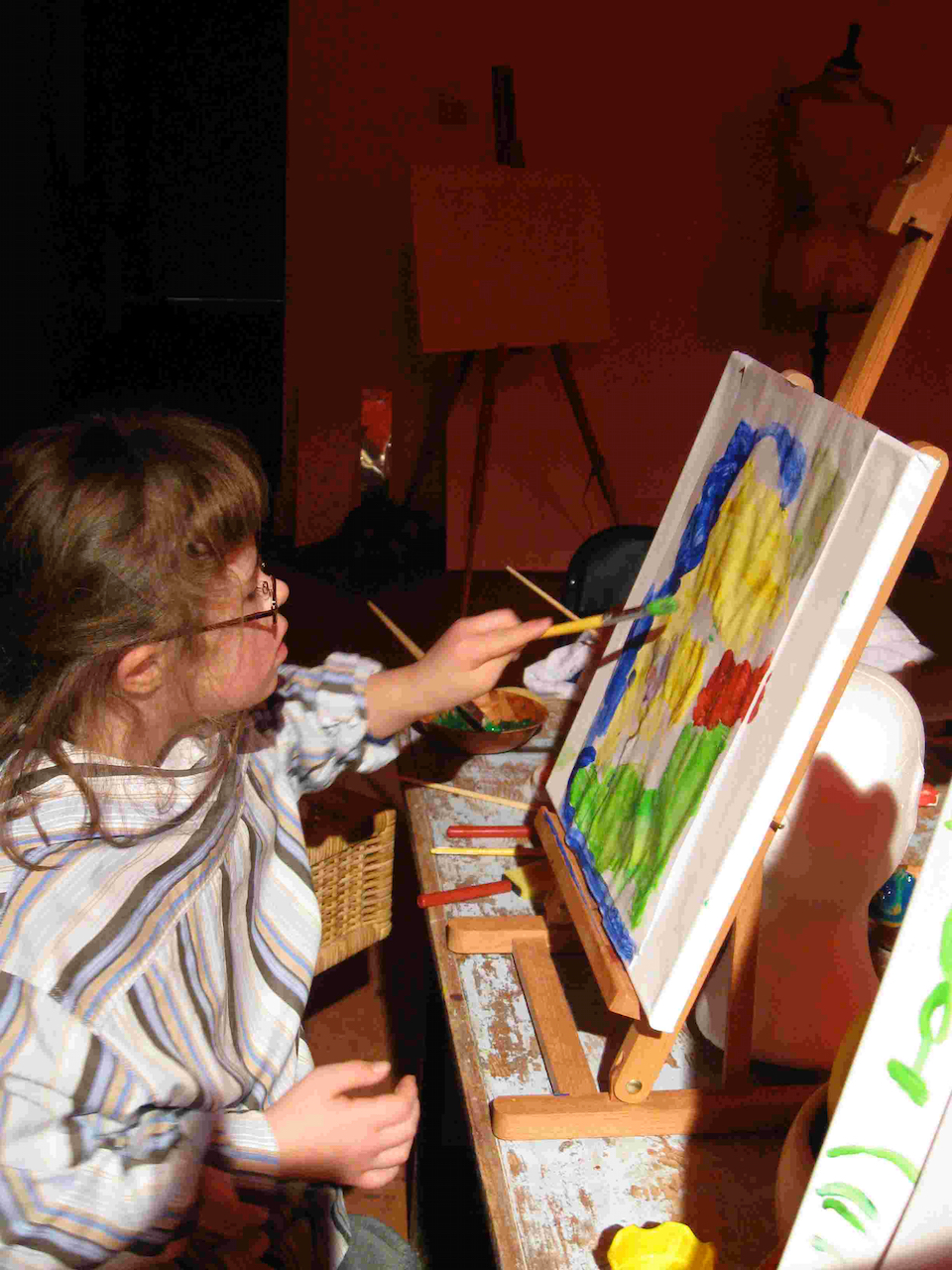
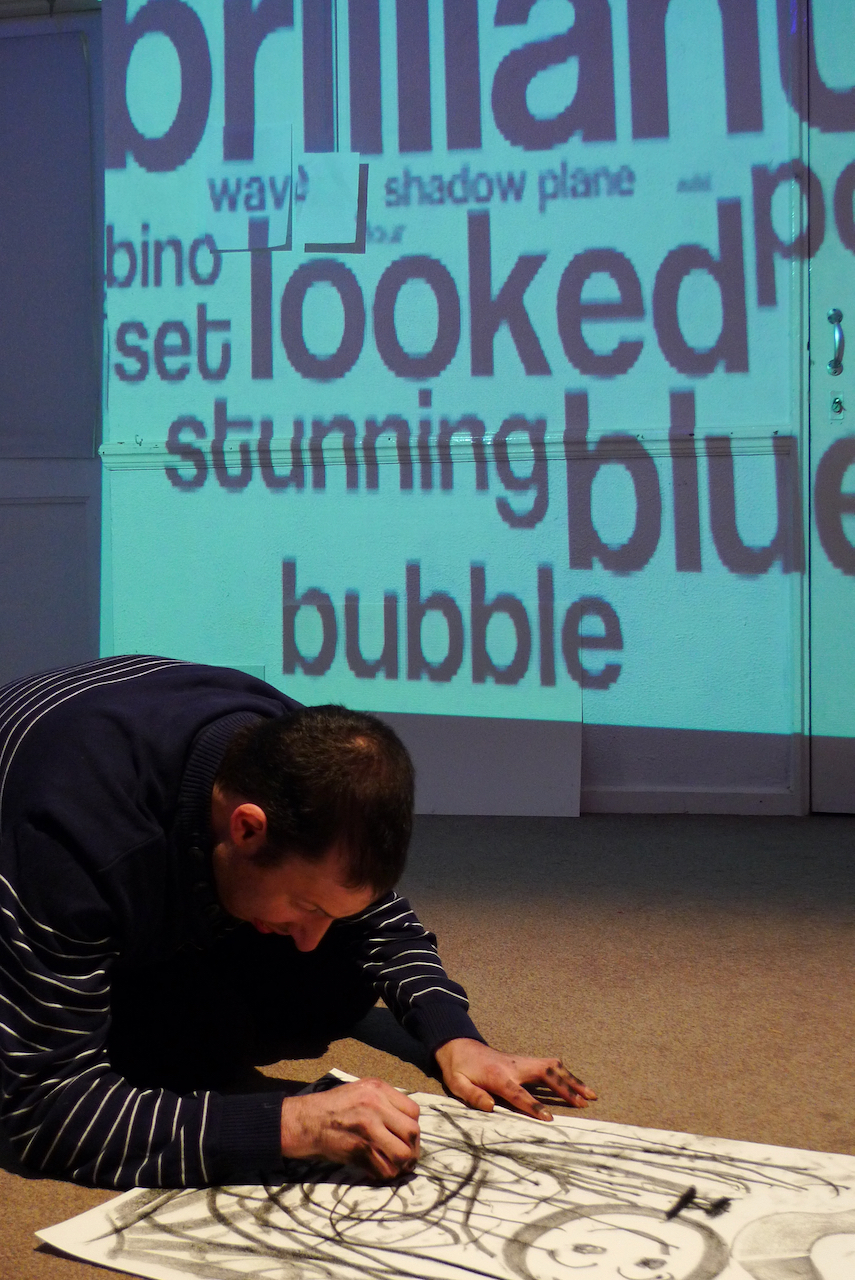
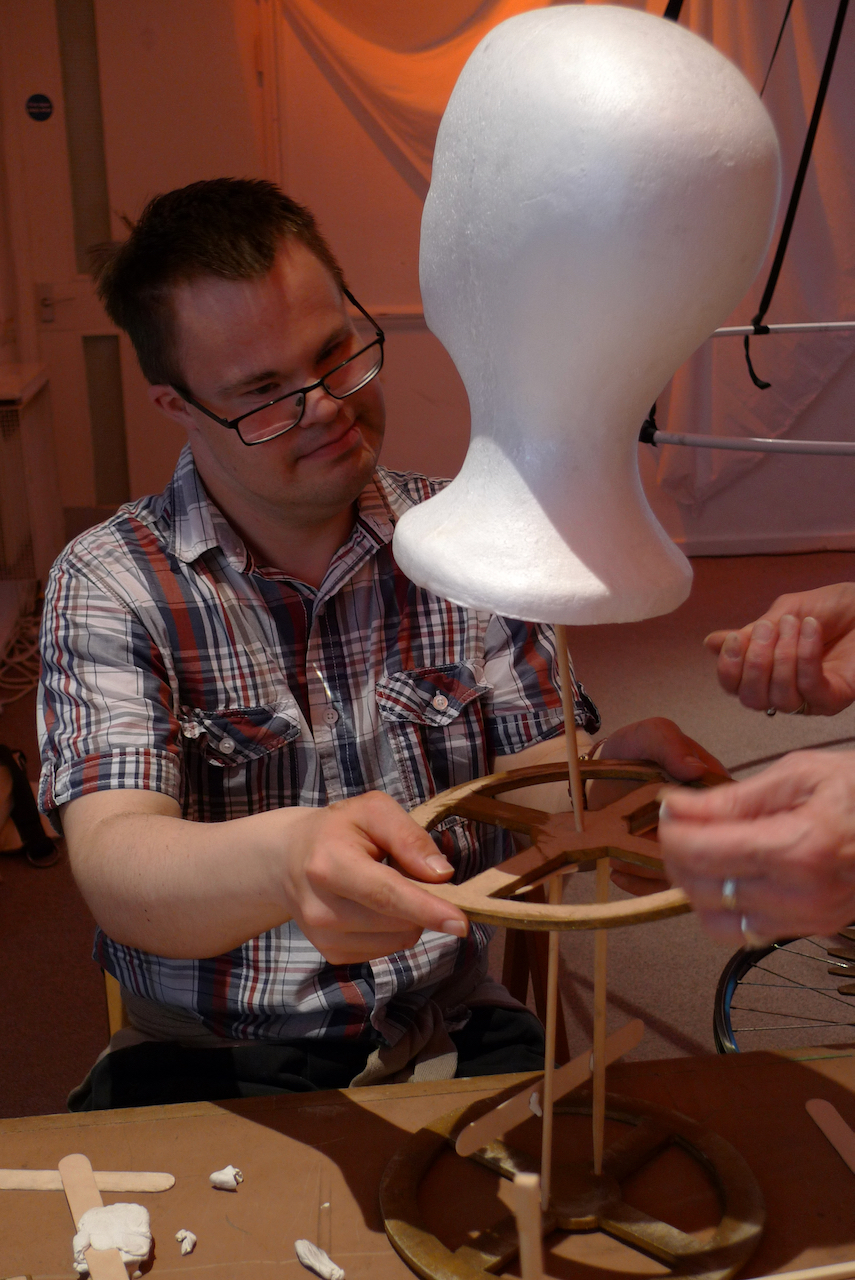
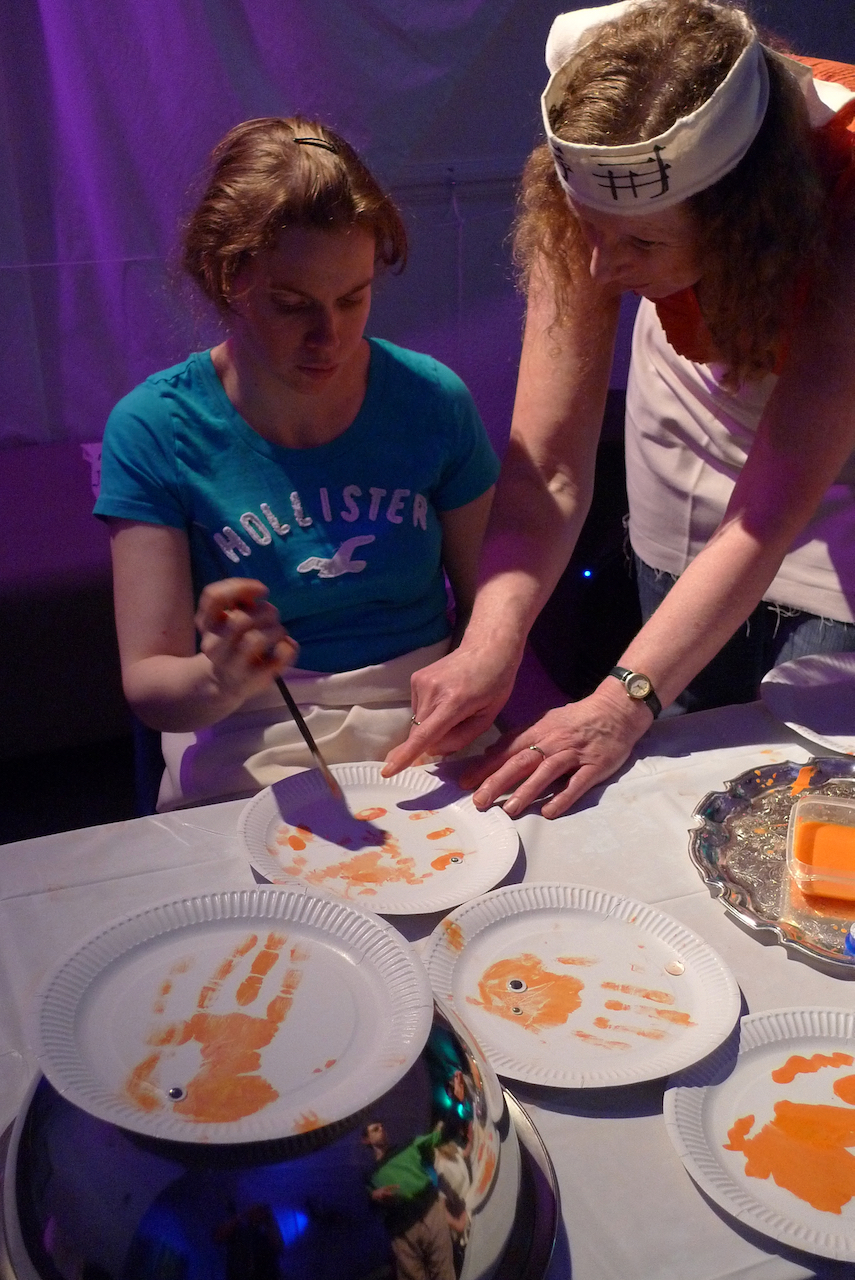
An arts activity can also combine with and complement other artforms to enrich the experience, inspiring music and movement within the activity, for example creating morphing patterns with elastic and shadows
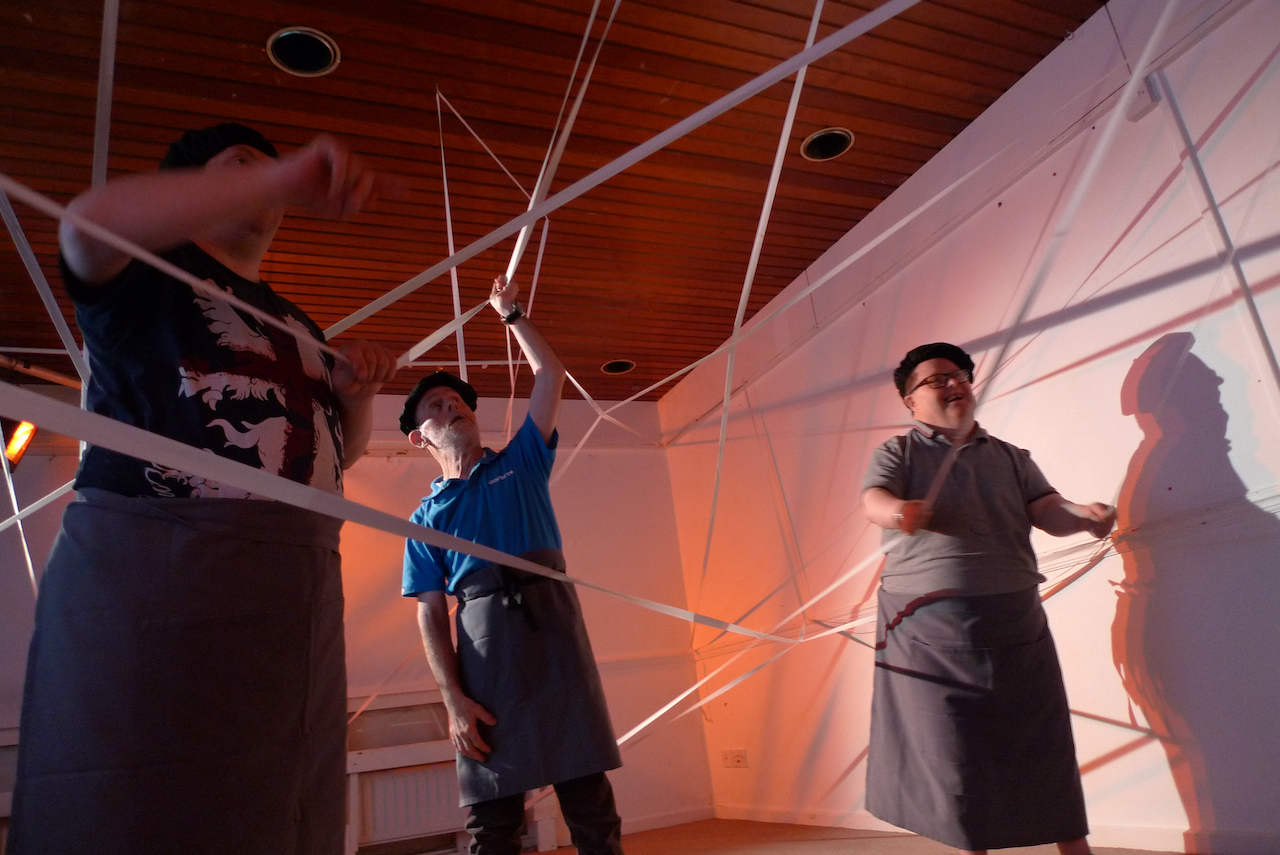
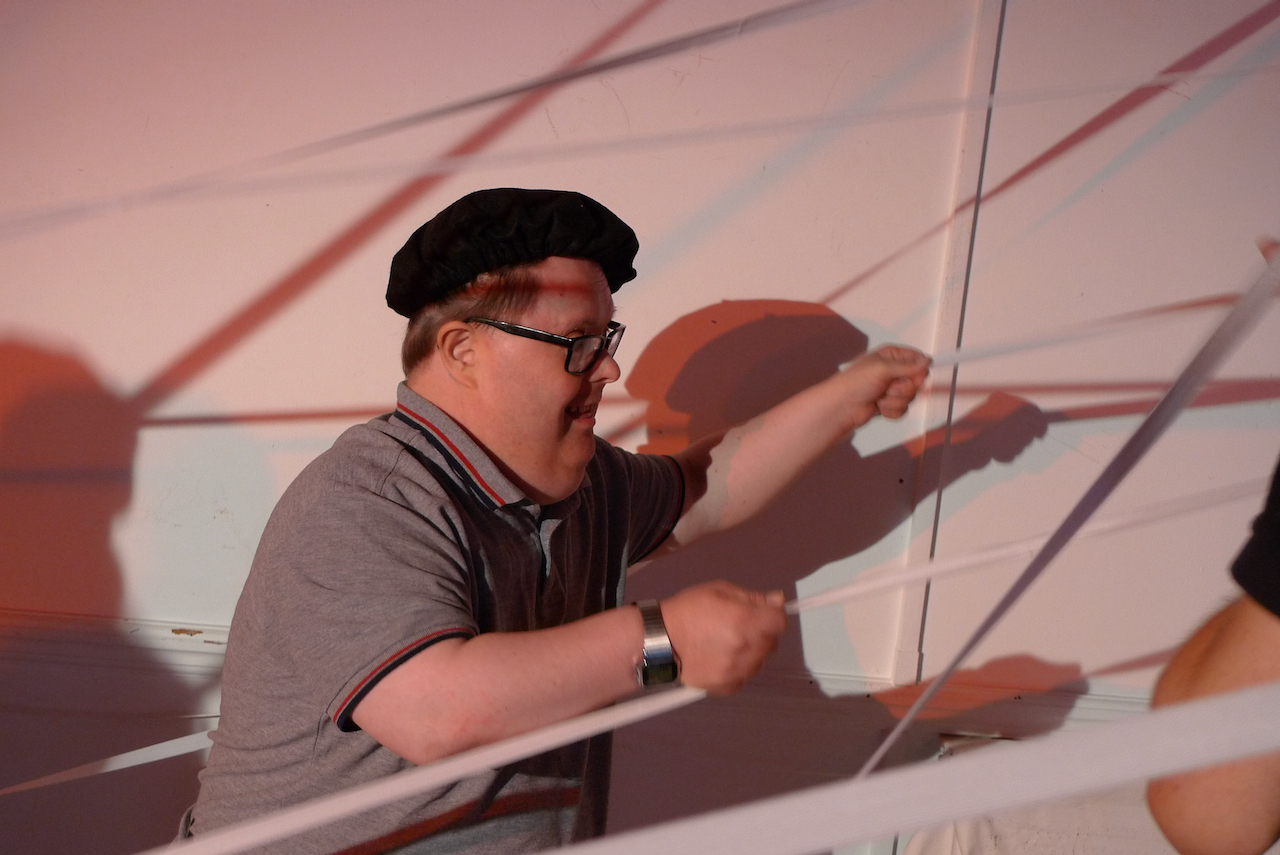
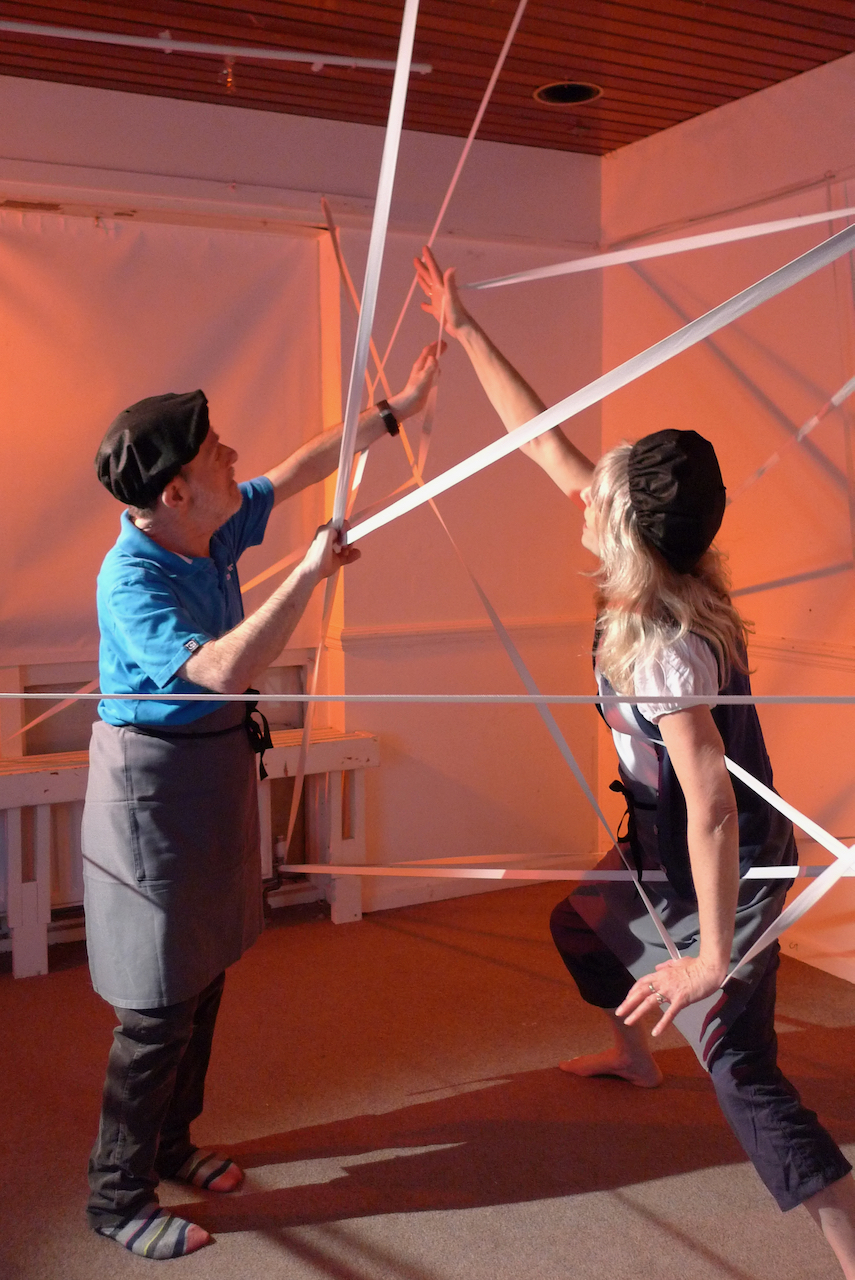
For participants who may have very
limited movement and/or communication difficulties, even the opportunity to
have time and space to communicate choices/preferences when contributing to
'the whole' means they are participating in creating art along with everyone
else. Pushing a brick off your knee with the tip of your finger, as a
contribution to building a structure, shows engagement and sharing the
experience, even if you can't place it for yourself.

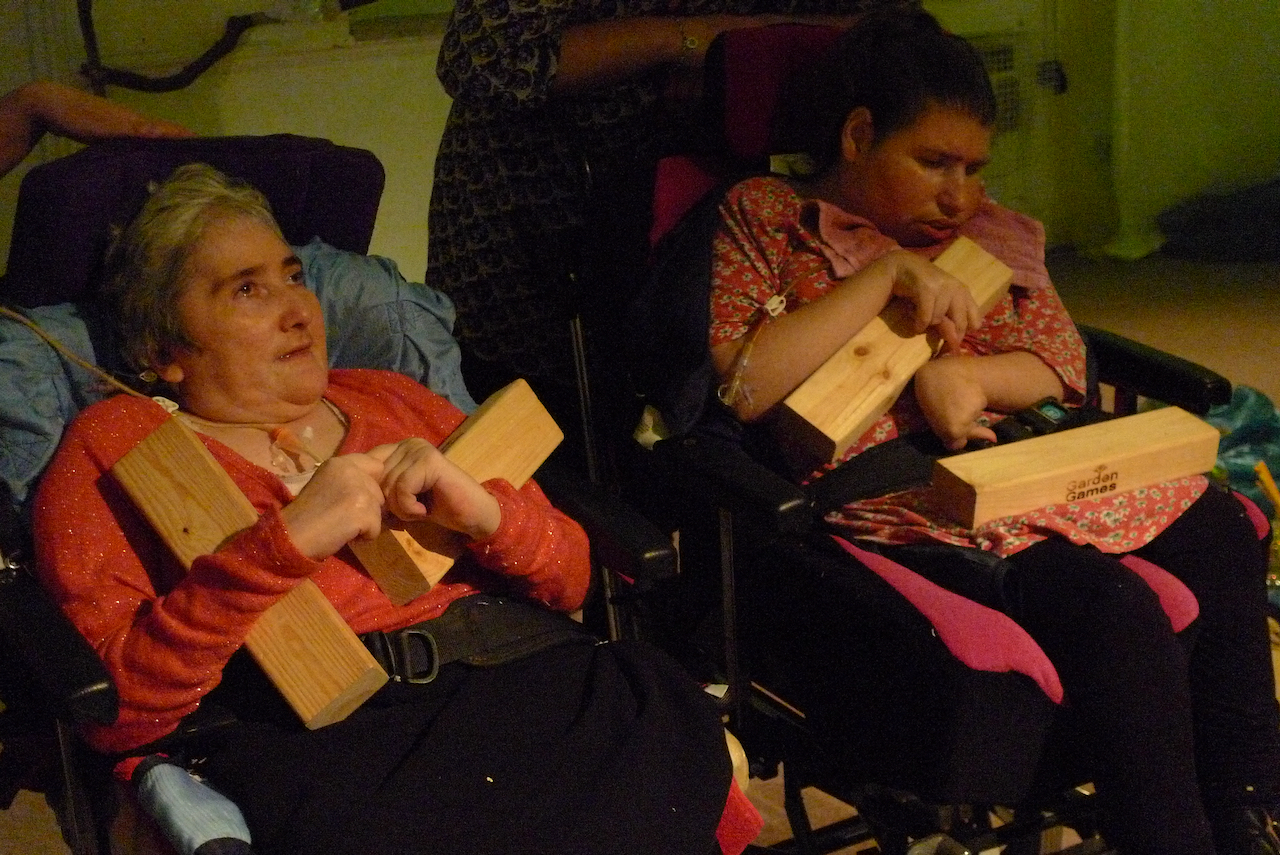
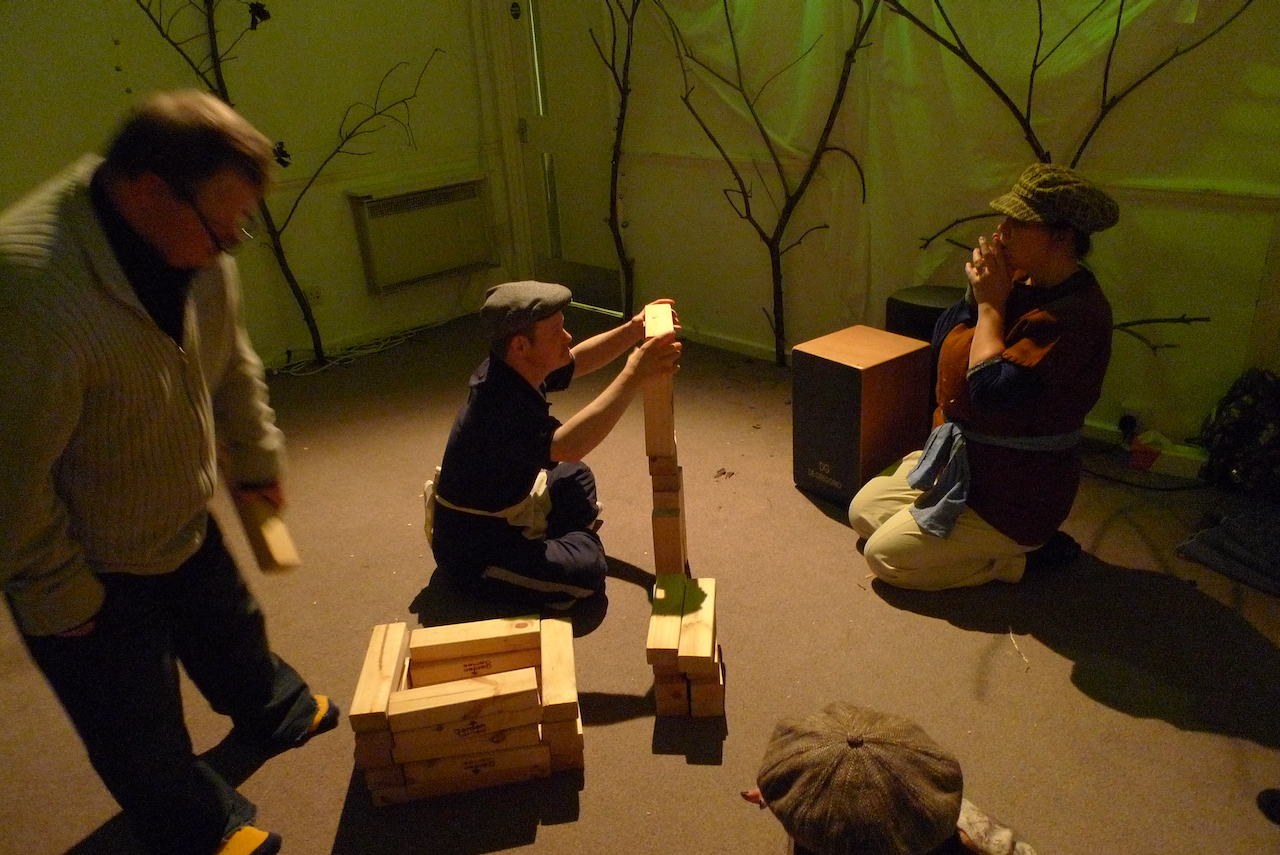
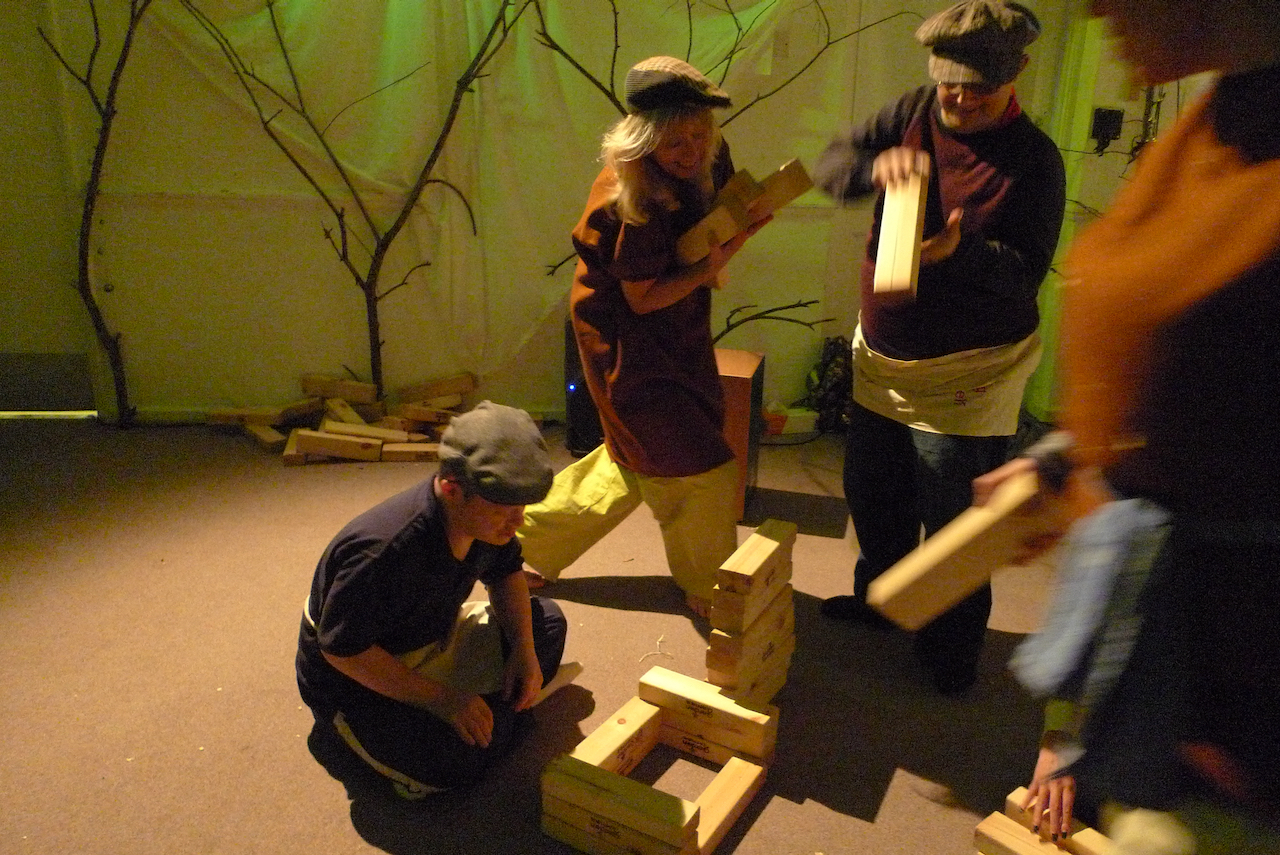
Drawing/painting
- give a context and motivation, without expectation. Making it fun, encourage
participants to try painting/drawing in other ways, with fingers in sand, with
facepaint on mirrors, with chalk on a cave wall, on paper plates with rice.
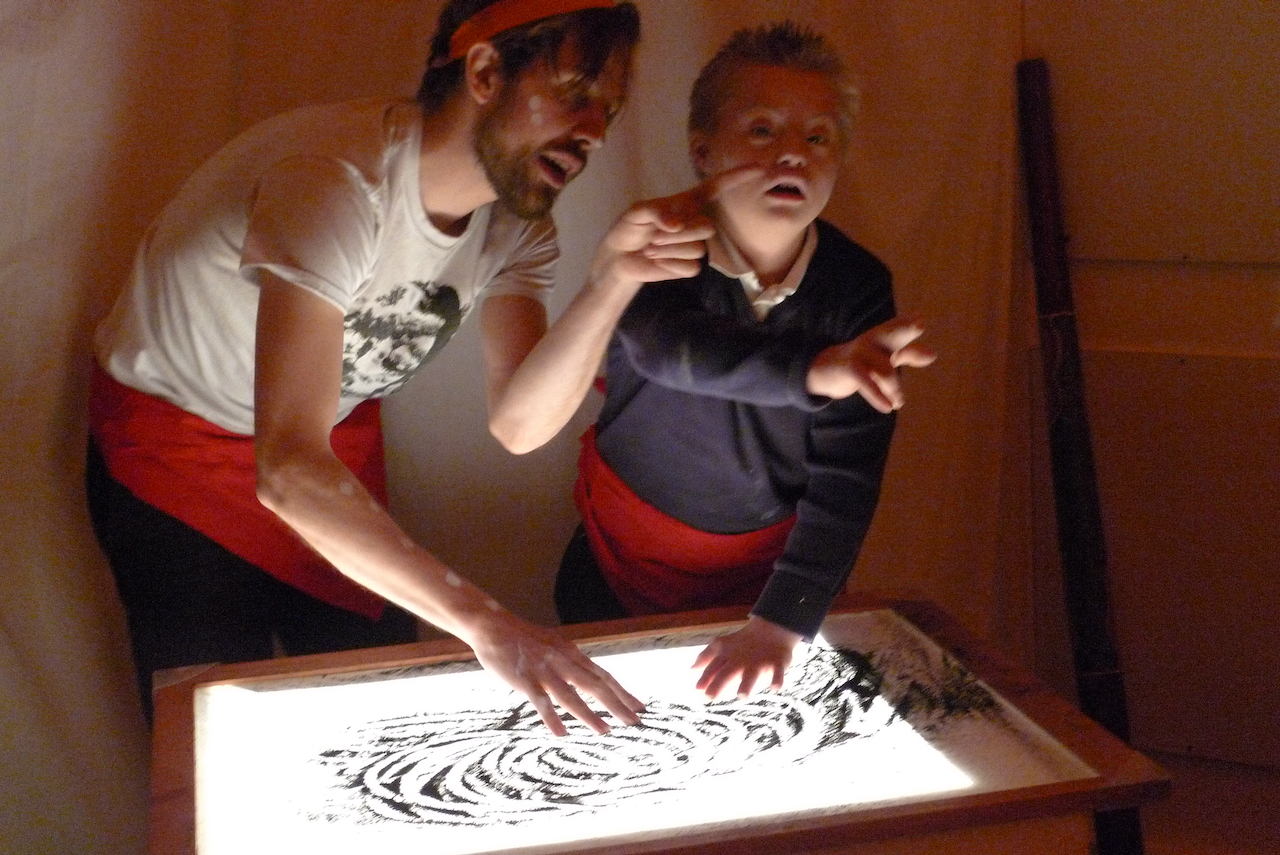

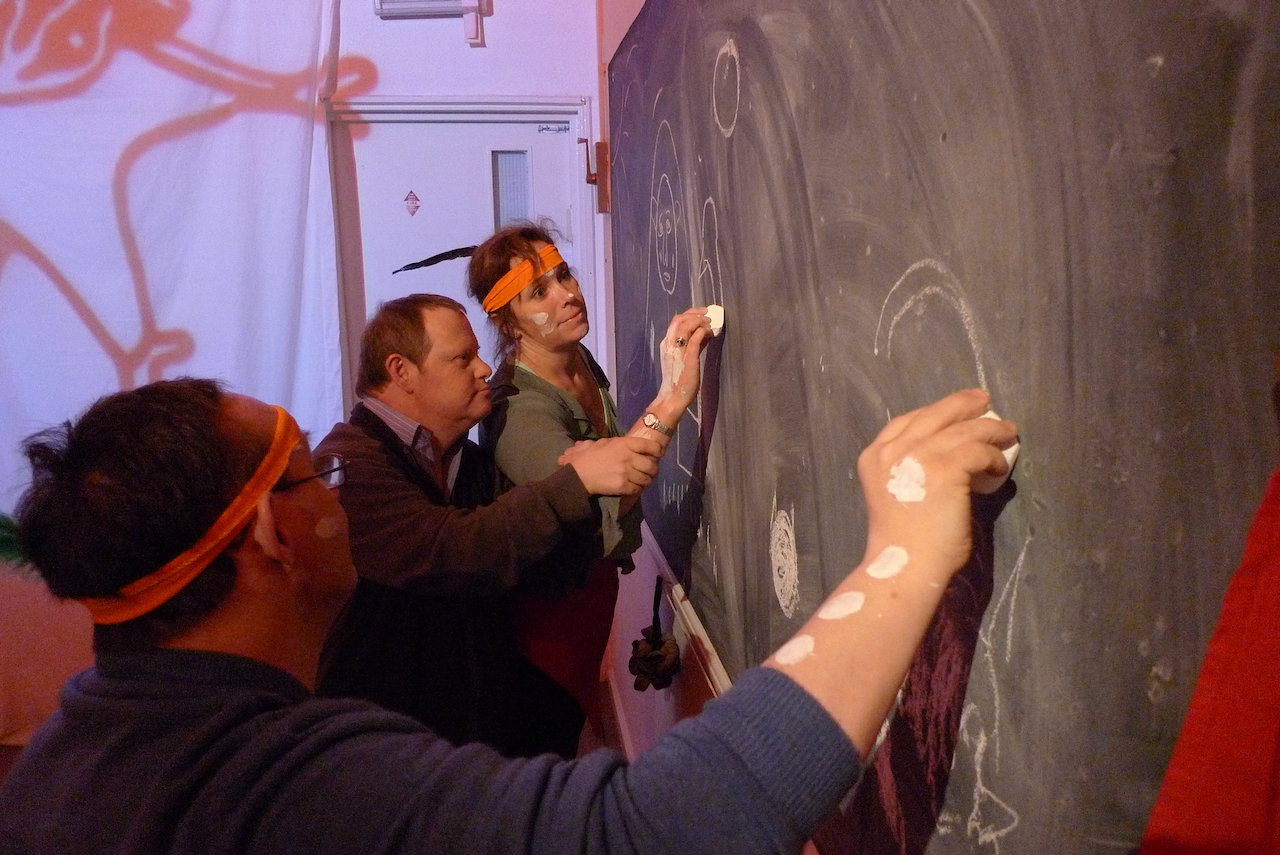
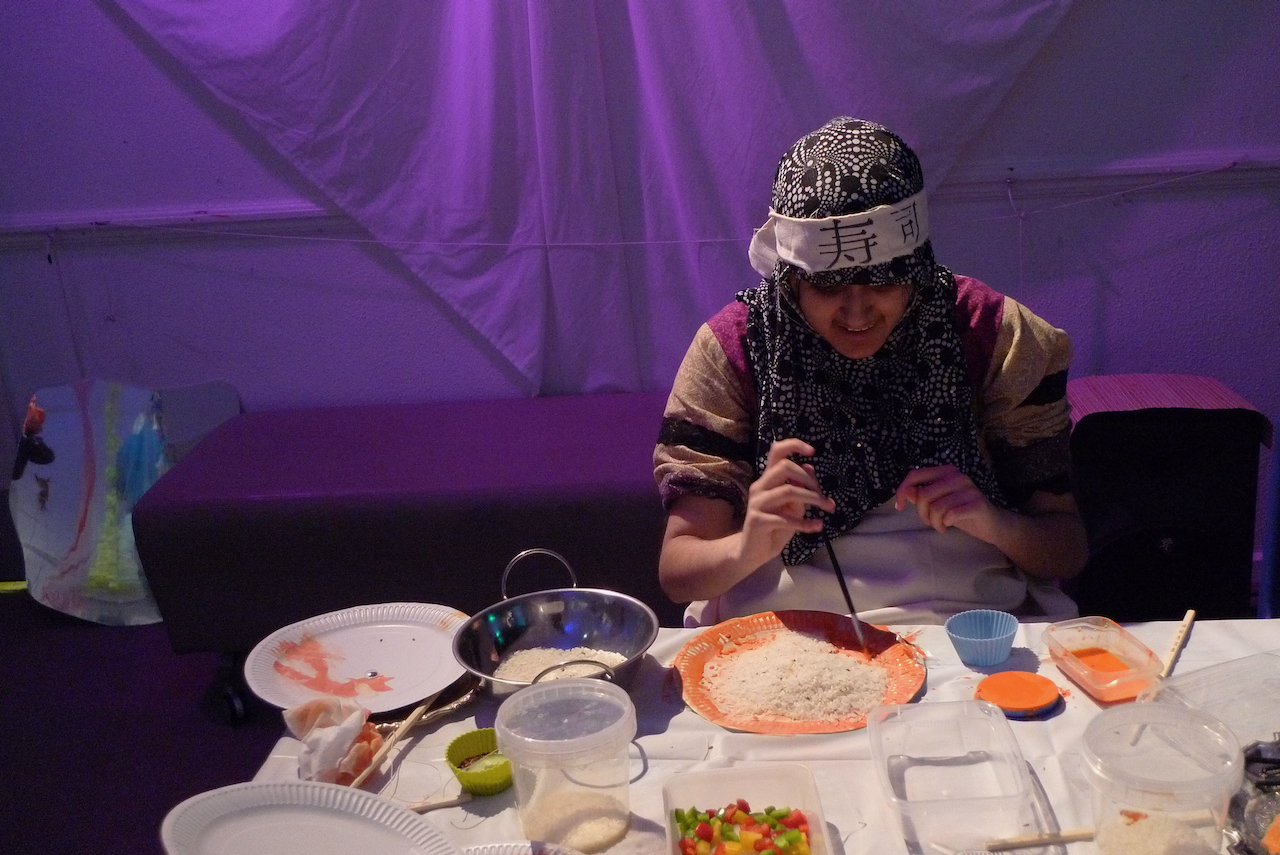
Constructing
spaces/building structures is a good way to utilise a variety of multisensory
props both small and large. Building with carpet tubes, plastic fencing, empty
boxes, not only allows sensory exploration of individual items, but encourages
cooperative activities and socialisation.
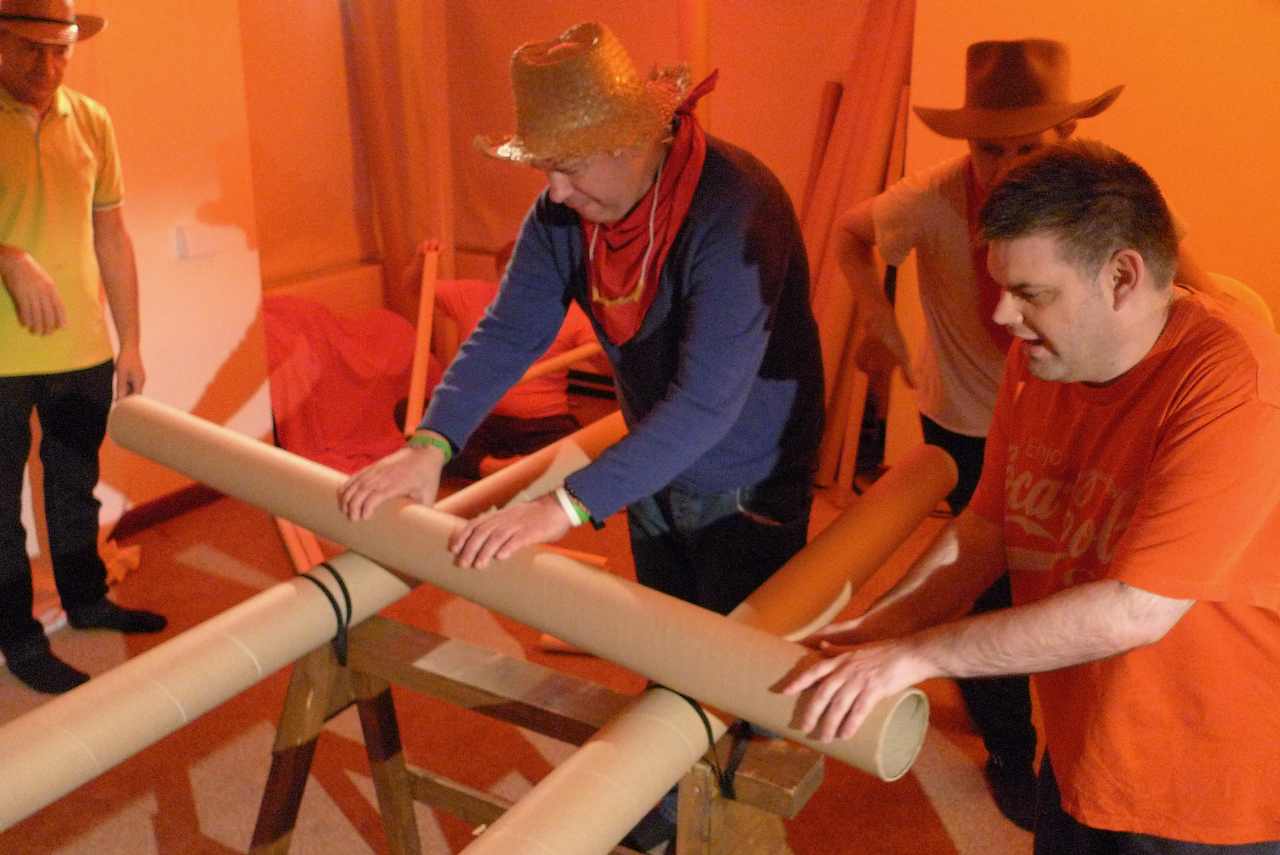



Decoration - materials, both from the natural world and man-made can be
used for weaving and adding to large areas which have already been prepared to
enable simple additions.

Use unusual materials with a variety of textures, maybe sounds attached to them. Poke them in holes, weave through wide gaps or attach to a frame.

This is all about making choices; colour, length, shape, texture, where things should go in relation to the whole. Enable options at different levels for those who are in wheelchairs or like to work on the floor
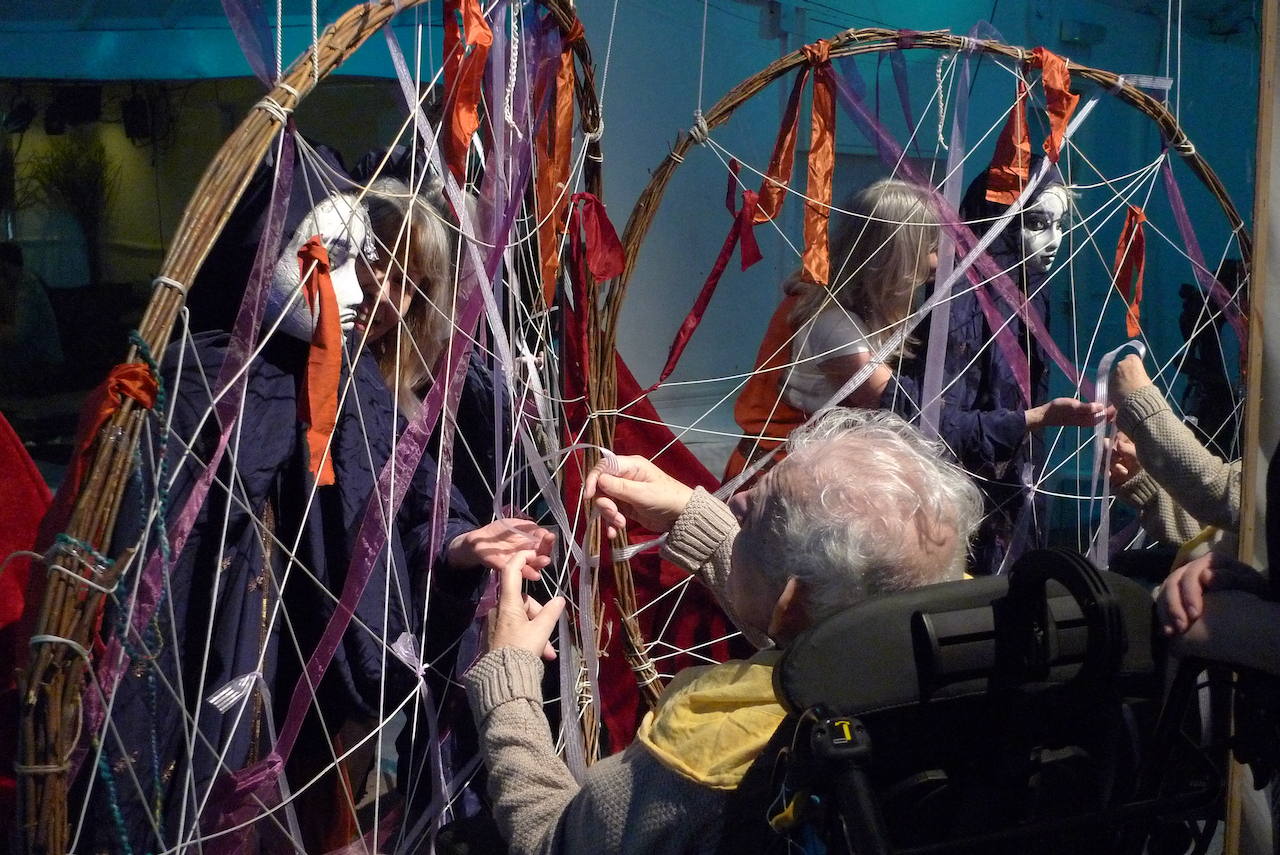
Adding lights makes it even more magical,
particularly if using different colours. Keep on/off switch easy to reach.

Pattern-making
- rice, stones, seeds, pine cones all have their own multisensory qualities and
can be used in bulk to create patterns as well as enjoying them individually. Laying them on a dark cloth creates a pleasing contrast.
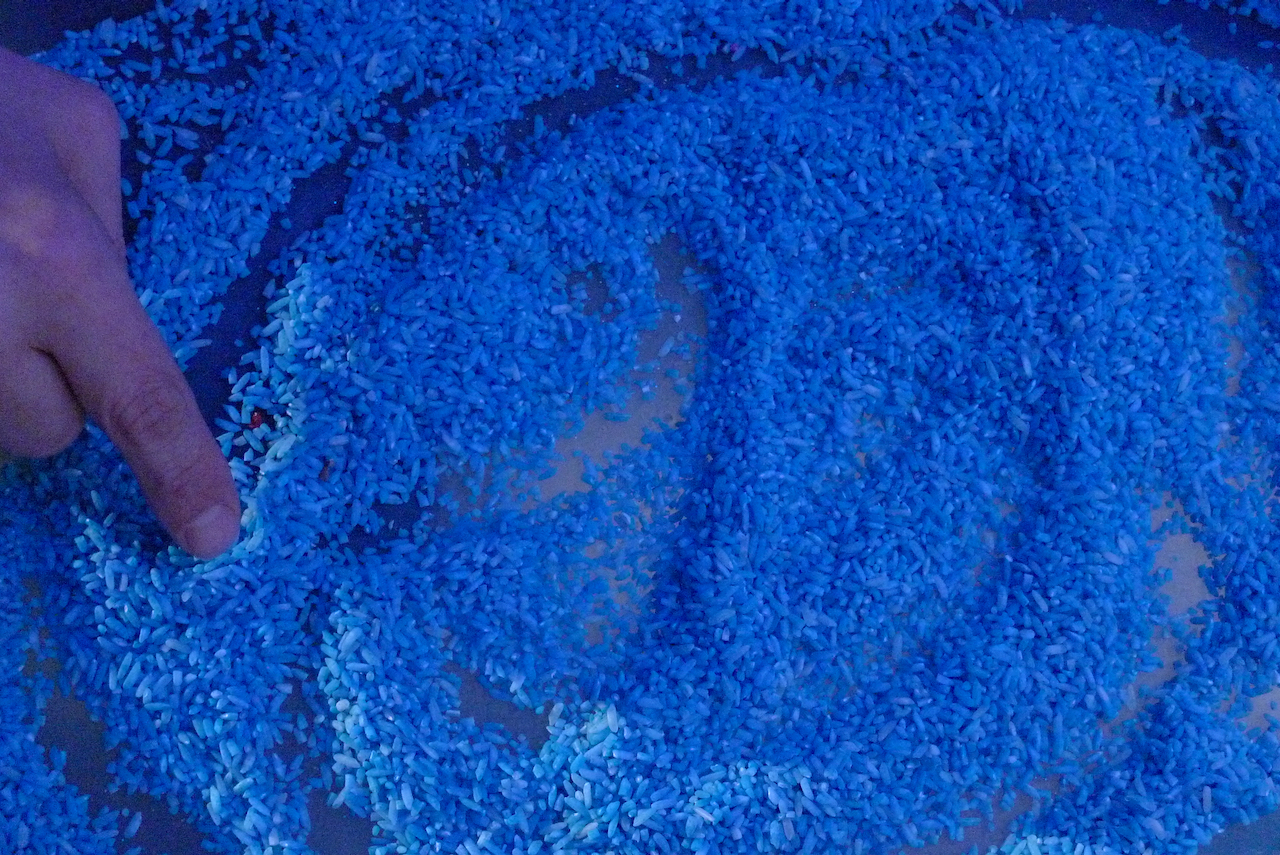
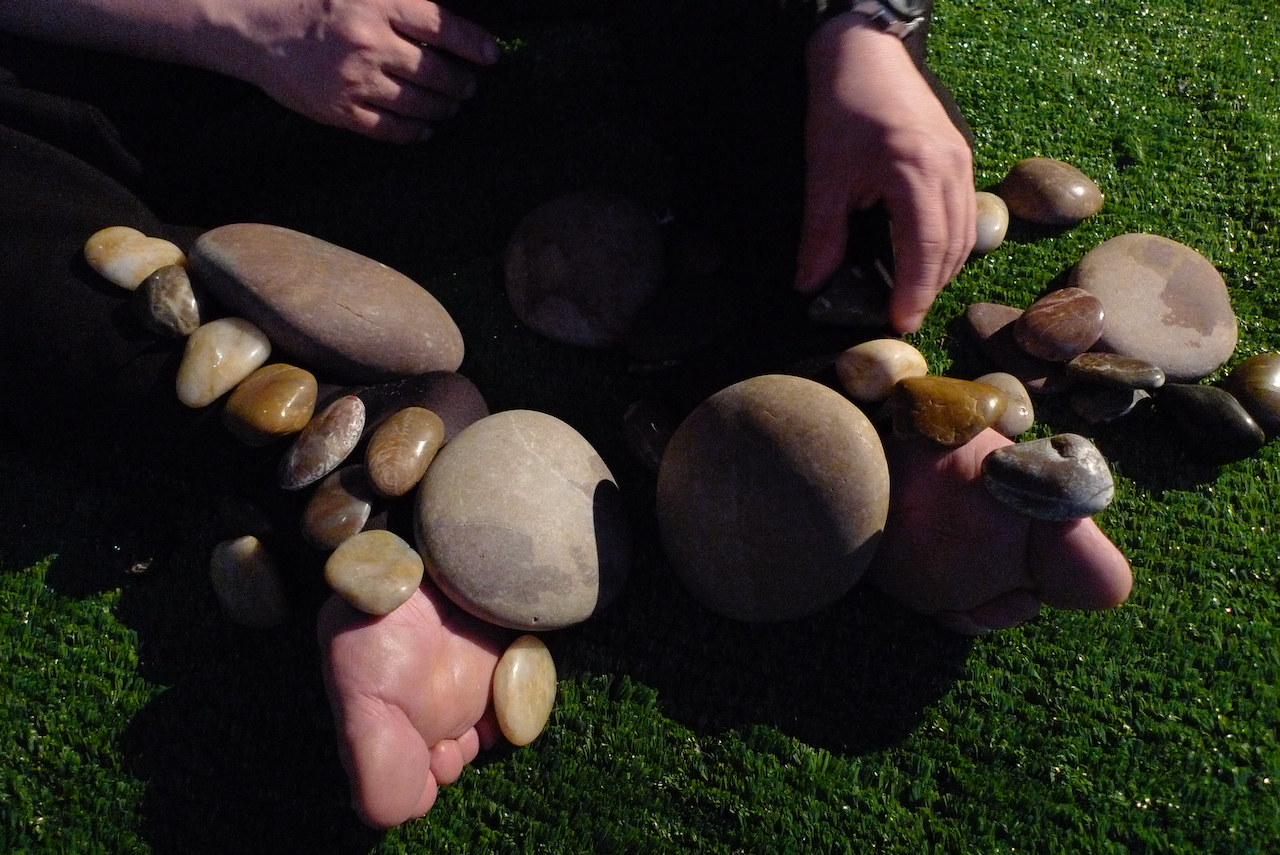
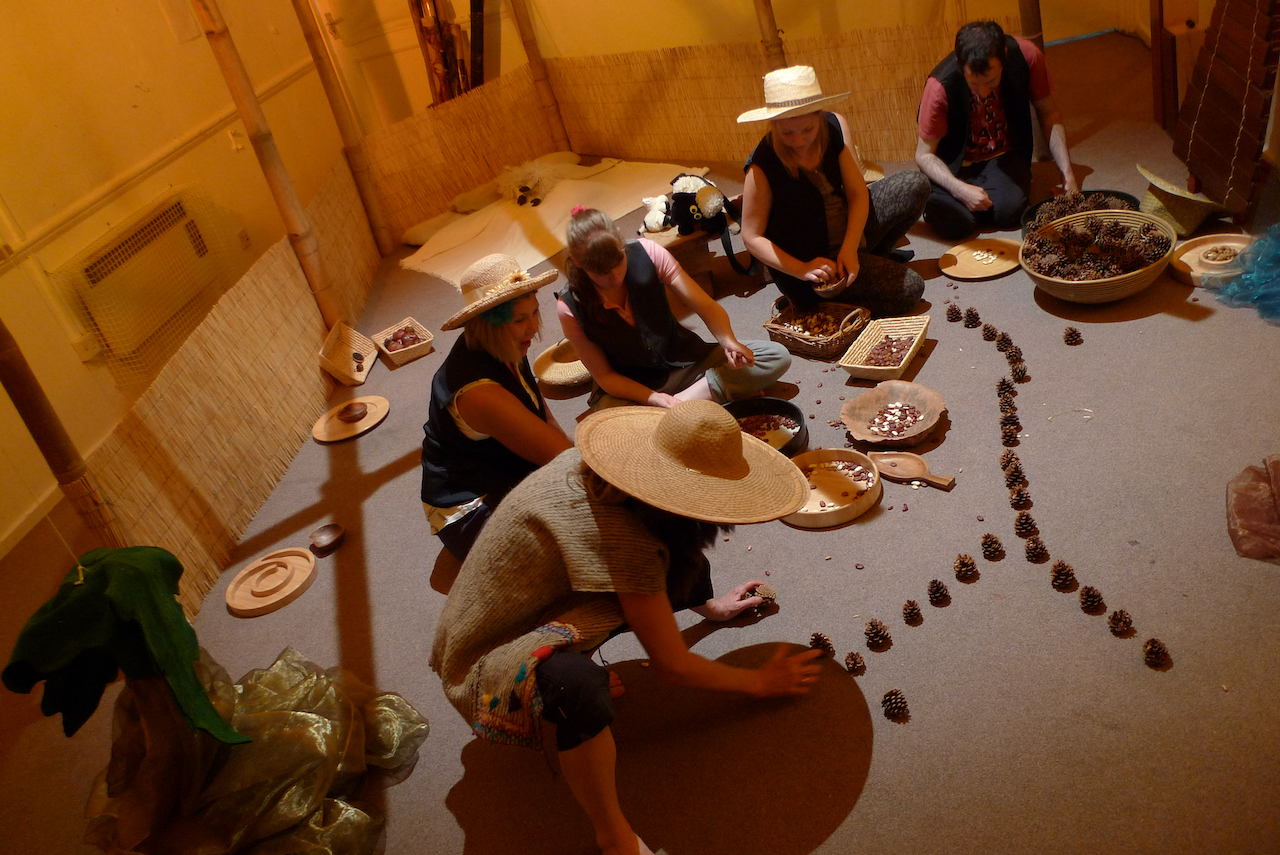
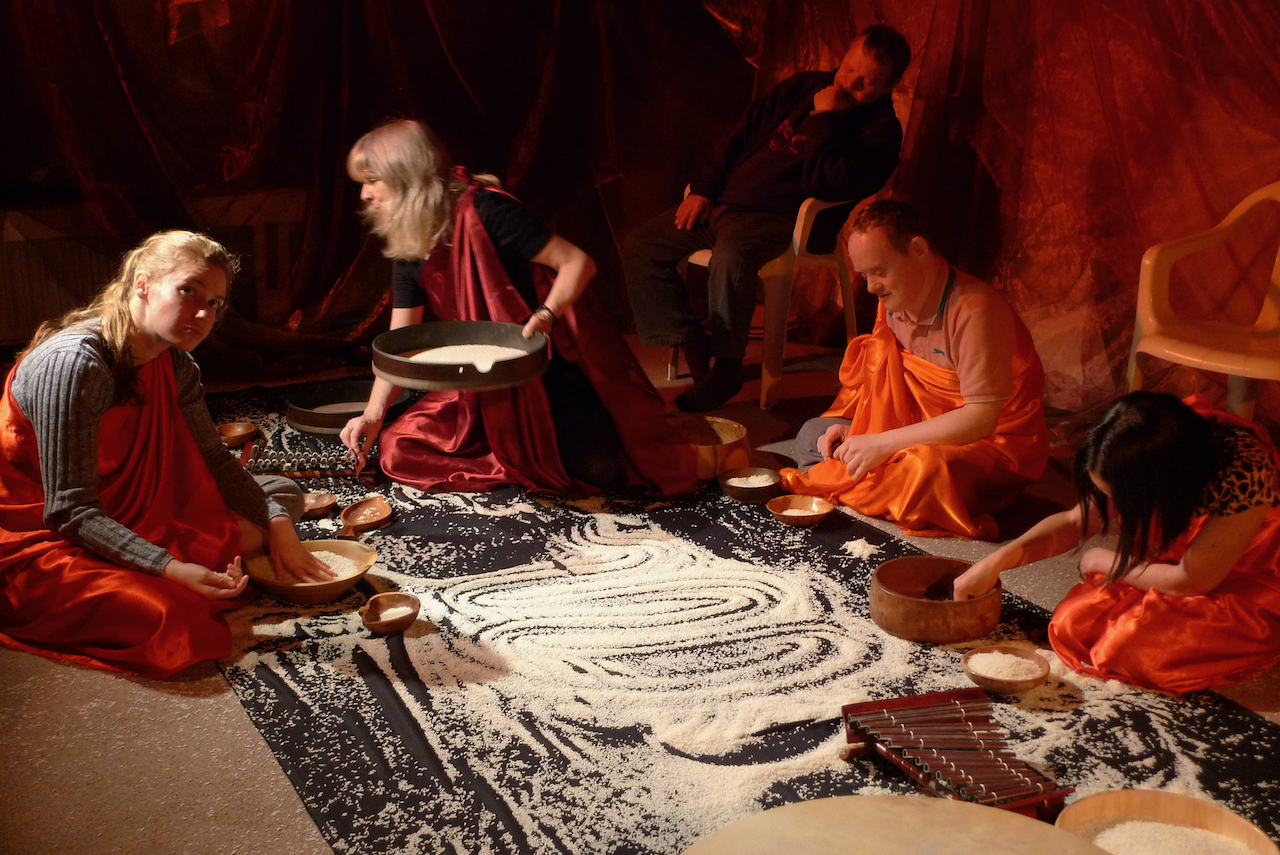
Pasta in a variety of shapes and sizes can create beautiful patterns , jewellery or unusual pieces of sculpture.

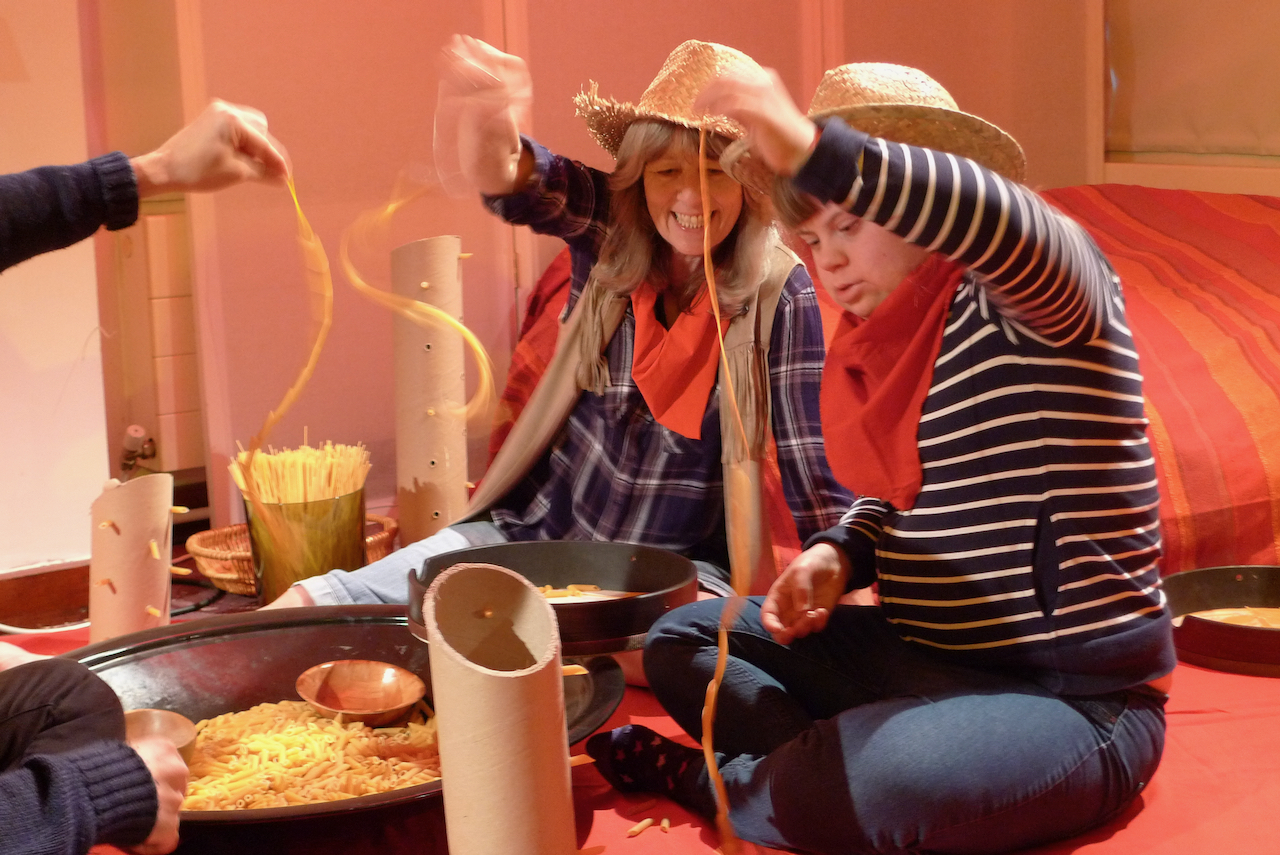
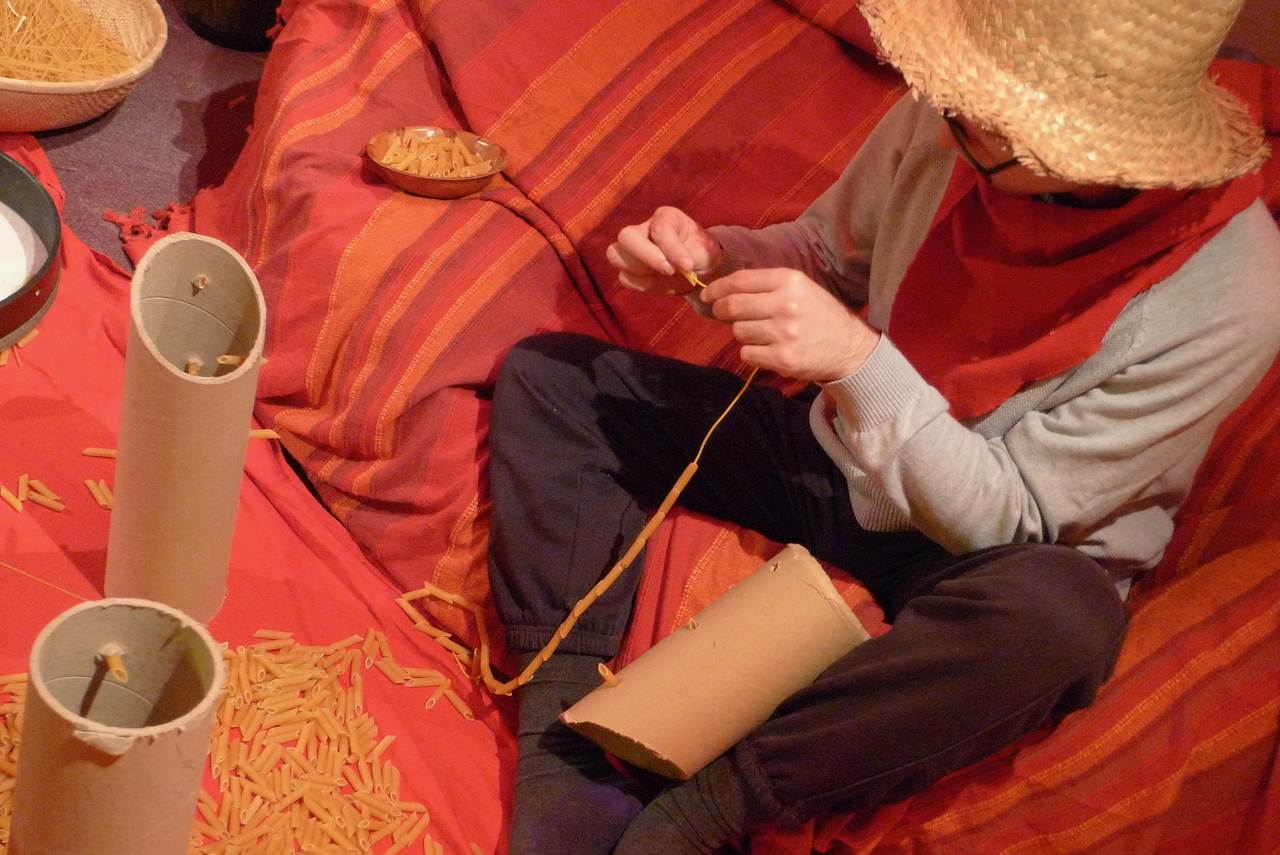
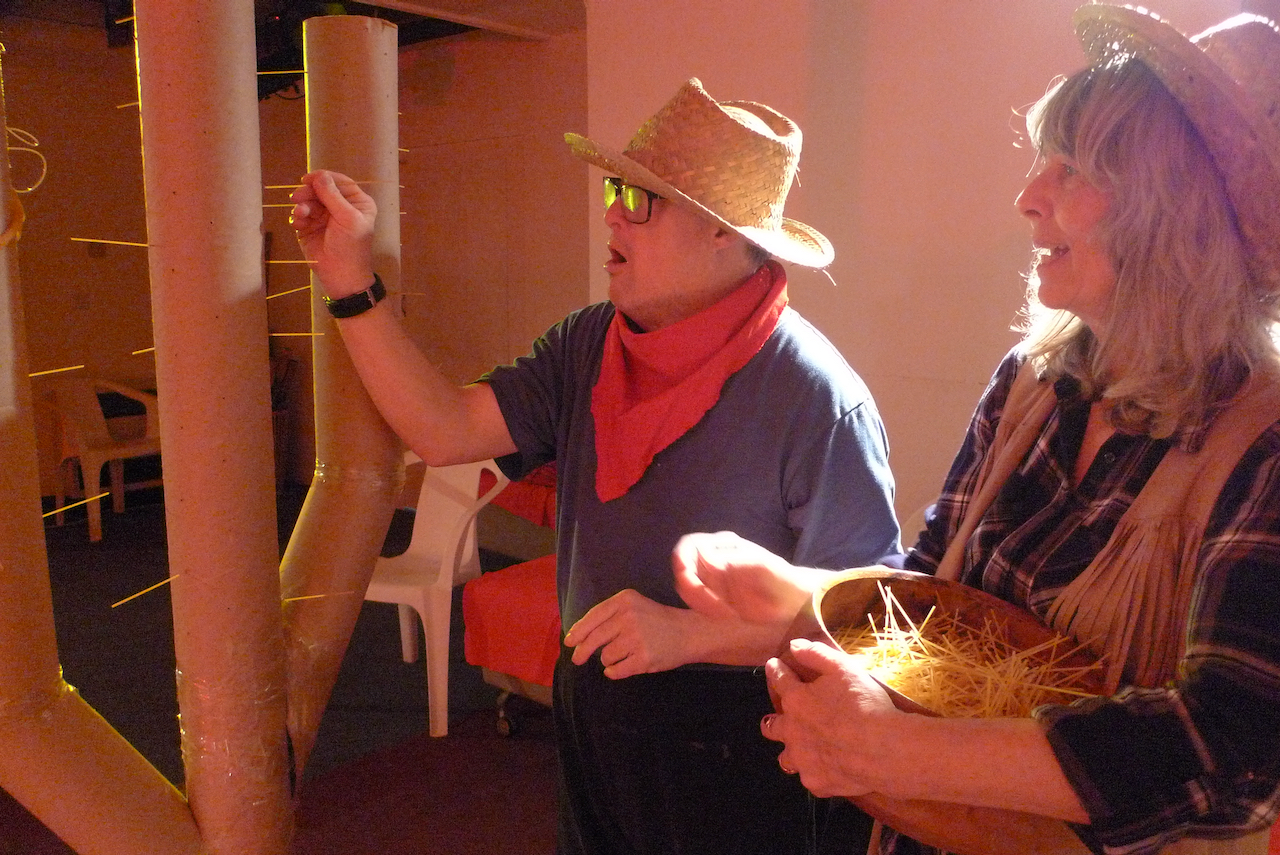
Coloured lighting gels
cut into shapes can simply be pressed onto a stretchwrap screen which has been
sprayed with water to create Mondrian inspired masterpieces.

